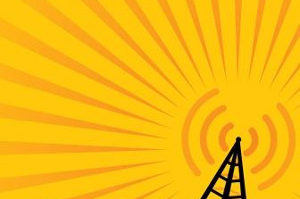
Mentions of alleged interference due to increased FM IBOC power levels are now cropping up in filed comments to the Federal Communications Commission.
The FCC had asked about how to treat cases of alleged interference when it sought the next round of comments on the proposed voluntary FM IBOC power increase.
By my count, it looks like approximately 32 of 41 commenters oppose a blanket increase. Many urge the FCC to wait until after the NPR Labs tests are done to make a decision on the proposed power increase. Comments to MB Docket 99-325 were due last Friday.
NPR stated in its filing that the few commenters supporting the proposed blanket power increase have offered no new evidence or basis to justify the proposal, which NPR calls “a significant omission, particularly given the failure of the prior testing to examine the impact of the proposed increase on analog SCA subcarrier services for the visually impaired and analog host compatibility.”
NPR states that as an example of improved HD Radio coverage, iBiquity and the Joint Parties “cite WKLB(FM), Waltham, Mass., which has operated at –10 dB under an experimental authorization, but they neglect to mention the interference that first-adjacent WRNI(FM), Narragansett Pier, R.I., has claimed to suffer.” Class A WRNI is grandfathered, short-spaced, to first-adjacent Class B WKLB(FM), Waltham, Mass. I recently wrote about the mobile and indoor testing using WKLB.
The Joint Parties are a group of broadcasters that operate commercial and non-commercial FMs, plus the Broadcaster Traffic Consortium and four equipment manufacturers. For commercial broadcasters, they favor an immediate, voluntary across-the-board 10 dB power increase or a 6 dB increase as an interim step and support NPR’s proposal for reserved band channels.
Rhode Island Public Radio CE Steve Callahan told the FCC that both he and some station listeners noticed white noise on several occasions when WKLB was operating at higher power and conducting testing at various elevated power levels. WKLB owner Greater Media told the FCC that two complaints were for areas outside WRNI’s 60 dBu contour and within WKLB’s 54 dBu contour.
In trying to replicate the interference situation, Greater Media stated: “Even with no HD transmissions by WKLB(FM), the WRNI reception was … relatively noisy.” At three other locations where there was alleged interference, Greater Media could not detect interference to the WRNI signal “regardless of whether WKLB was transmitting analog only, –20 dBc HD or –10 dBc,” Greater Media said in an engineering report to the commission submitted by WRNI in its new comments. In their comments, the Joint Parties stated that “WKLB(FM)’s engineers found no evidence whatsoever that the station’s elevated digital operations contributed any interference to WRNI(FM)’s analog service at any location within WRNI’s protected contour.”
Entravision said while it’s excited about IBOC’s potential for multicasting and data use, it urged the FCC to address potential FM analog interference from stations operating in digital. It said KRRN(FM), Moapa Valley, Nev. has experienced interference from adjacent channel stations operating at –20 dB and now has a reduced coverage area.
Daniel Houg, chief engineer of KAXE(FM), Grand Rapids, Minn. on 91.7 MHz, told the agency that KAXE “has experienced a reduction in coverage 20 to 30 miles of our signal from HD interference from an HD station operating on 91.3. Note that we are the second adjacent and yet we have experienced tremendous interference that has not been resolved.”
NPR stated in its comments that reports of interference to analog FMs at the currently authorized IBOC power “is significant, since the white noise-like quality of the interference makes it appear as though the analog service is simply too weak to be received properly and not the victim of an adjacent IBOC transmission. Thus, even loyal listeners would not necessarily know to register an interference complaint. These examples of real world interference compel a cautious approach” to the power increase.
Canadian engineering consultant Barry McLarnon points out that it’s hard to find interference complaints, since they are not part of the public record, “making it difficult for affected broadcasters and listeners to compare their experiences with others.”
To be fair, these appear to be a few cases out of the nearly 2,000 stations on the air with IBOC. However, in my view they do point to the need for the FCC to be clear on how digital-to-analog interference is to be defined and what needs to happen for interference remediation, when necessary.












